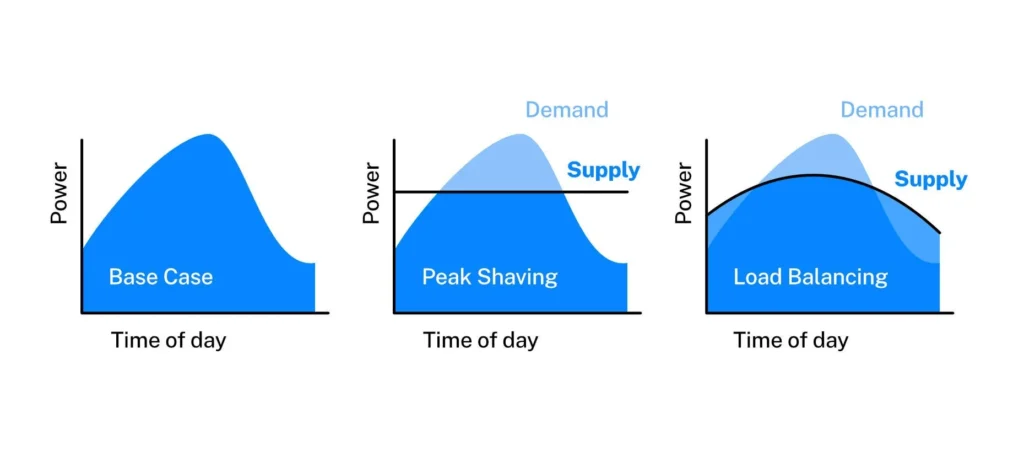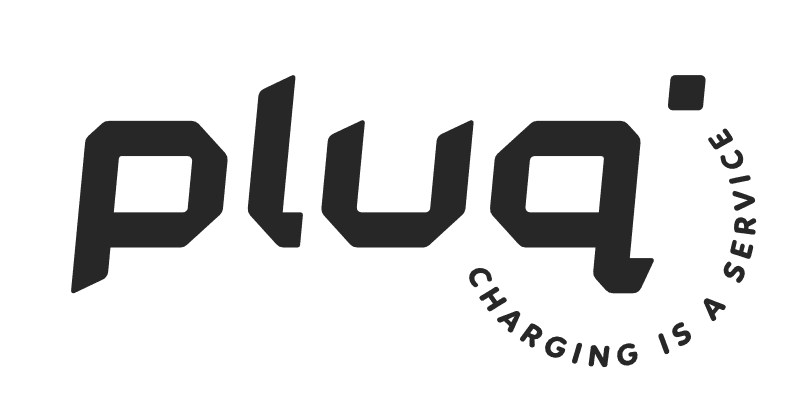1. What is dynamic load balancing?
As more electric vehicles (EVs) charge simultaneously on business premises, traditional electrical infrastructure can quickly reach its limits. That’s where Dynamic Load Balancing (DLB) comes in. It’s a technology that ensures available power is intelligently distributed among all connected electric vehicles—automatically and in real-time.
Unlike static load settings, which allocate a fixed amount of power per charger regardless of usage, DLB continuously adapts to demand and supply. This enables businesses to support more charging sessions without requiring an upgrade to their grid connection.
Smart charging starts with smart distribution.
2. Why it matters in practice
Dynamic Load Balancing is often mentioned alongside another important concept: peak shaving. While they both help manage energy flow, they serve different purposes.
- Dynamic Load Balancing (DLB) focuses on how power is distributed across electric vehicle (EV) chargers in real-time. It ensures multiple vehicles can charge simultaneously without exceeding the site’s electrical limits.
- Peak Shaving limits the total energy drawn from the grid during periods of high demand. It’s often used to avoid peak tariffs or prevent exceeding contracted capacity.
In practice, DLB operates at the charger level, determining how much power each vehicle receives. Peak shaving operates at the site level, determining how much power the charging system as a whole is allowed to use.
Combined, they allow facility managers to charge more vehicles, avoid overloads, and control costs.

Picture this: you have five electric vehicles (EVs) charging, but only 100 amps of power are available. Without DLB, you risk blowing fuses or limiting the number of chargers that can be used. With DLB, the system dynamically balances power—each EV receives exactly what it needs without exceeding the site’s capacity.
The benefits are clear:
- You avoid costly grid upgrades
- You use your existing capacity more efficiently
- You can install more chargers with fewer limitations
More chargers. Less strain. Smarter energy.
3. Inside the charging station
Dynamic load balancing depends on sophisticated hardware inside the charger. Every intelligent charger contains two main components:
- The controller acts as the system’s brain, managing everything from user authentication and safety controls to communication with the backend.
- The power module is the muscle. It handles current switching and energy delivery to the electric vehicle (EV). In DC chargers, it also converts alternating current (AC) to direct current (DC).
These components operate in real-time, continuously adjusting power output based on available capacity, live consumption, and charging priority.
Smart hardware makes smart charging possible.
4. Software & algorithms: The invisible workhorse
Behind the scenes, software plays a vital role in dynamic load balancing. Embedded algorithms monitor active sessions, track energy usage, and adjust charging currents on the fly. These systems can prioritize based on factors like:
- Order of arrival
- Battery state-of-charge (SOC)
- Scheduled departure time
In more advanced applications, AI-powered platforms like Ampcontrol can respond to price signals, perform peak shaving, or adjust to operational priorities—automatically.
Charging is no longer fixed—it’s flexible, adaptive, and intelligent.
5. Communication: How systems talk
Dynamic load balancing only works when all systems communicate clearly and reliably. This involves a range of standard protocols:
- OCPP (Open Charge Point Protocol) connects chargers to central management software, allowing remote control and real-time monitoring.
- Modbus enables communication between the charger and building energy management systems (EMS), allowing for local load coordination.
- CAN bus links internal components, especially in high-power DC systems, for fast and robust data exchange.
Together, these protocols ensure that chargers can respond quickly to internal system loads, energy prices, and real-time site conditions.
No communication, no coordination. Protocols make smart charging real.
6. Integration with your site
EV chargers shouldn’t stand apart from the rest of your infrastructure. When integrated with your building’s energy and IT systems, chargers become part of a seamless operation:
- Load profiles can be adjusted based on other energy consumers on-site
- Charging costs can be allocated across departments or tenants
- Administrators can access live data, usage reports, and perform remote diagnostics
Integration also enables alignment with solar generation, battery storage, or demand-response events, ensuring your site charges smarter, not harder.
From EVs to HVAC: total energy coordination.
7. What’s Next?
EV charging is rapidly evolving, and load balancing is evolving with it. Key developments on the horizon include:
- Vehicle-to-Grid (V2G) capabilities, allowing EVs to return energy to the grid or building
- Solar and storage integration, where charging schedules align with available renewable power
- Predictive load management, where AI anticipates energy demand, pricing, and driver behavior
- Ultra-fast, modular chargers with shared output for maximum flexibility
These innovations will transform chargers from static endpoints into dynamic energy assets.
Charging is evolving fast. Make sure you are ready for what’s next.
Ready to unlock your charging potential?
We’d love to explore what’s possible on your site. Whether you want to support more electric vehicles, manage energy more effectively, or prepare for a fully electric fleet, Pluq delivers scalable solutions tailored to your needs.

